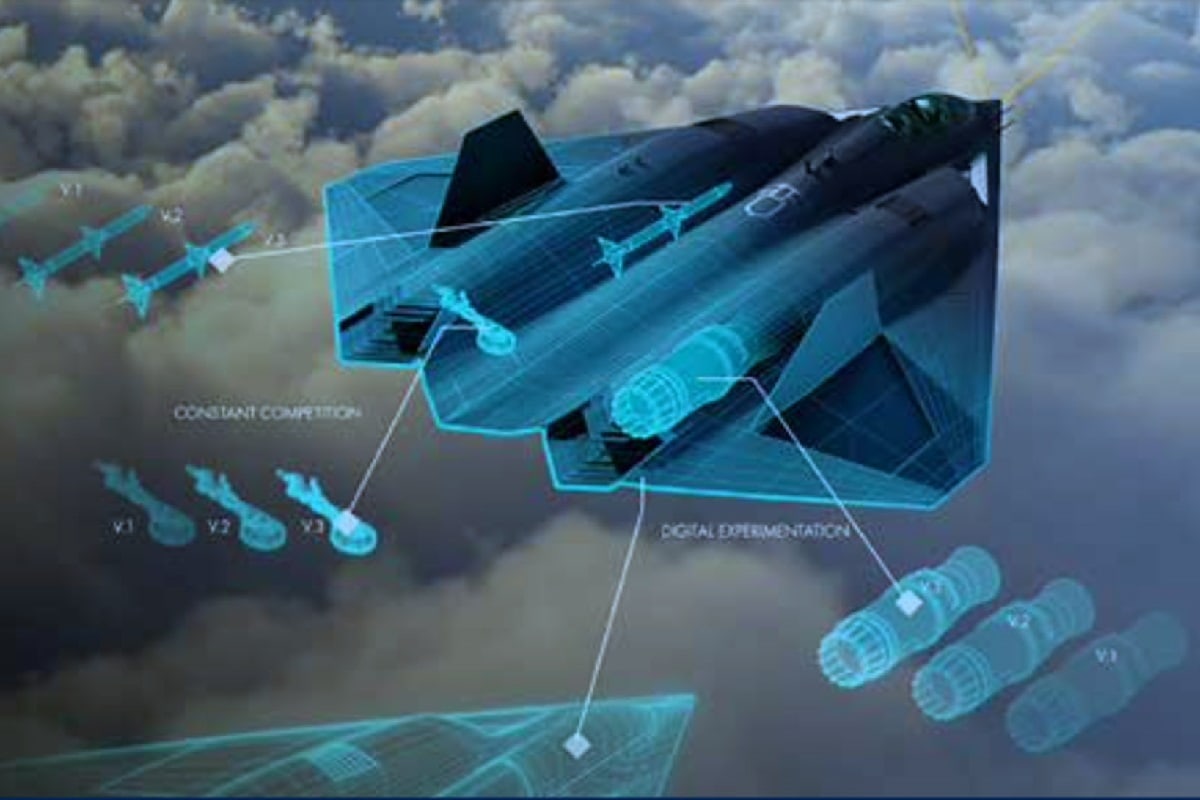The X-44 Manta looks like one amazing stealthy fighter. And yet, this photo was about as far as the U.S. military ever got. However, that might change quite soon, at least according to some experts: Considering all the Lockheed Martin products I’ve written about thus far in my fledgling career as a Contributing Editor to 1945, I feel compelled to state here for the record that I’m not a paid LM spokesperson (though I certainly befriended my fair share of LM employees when I worked in support of the Iraqi Air Force F-16 program at Balad Airbase back in 2015-2018)! Ok, that is my attempt at some humor.
Let’s take a look at yet another one of Lockheed Martin’s offerings: the X-44 Manta.
No, Not the Sea Creature, But Rather a Warbird
In this case, “MANTA” does not refer to the majestic sea animal (otherwise it’d be the name of a submersible instead of an aircraft, right?), but is yet another acronym (Lord knows we military types love our alphabet soup), this one standing for Multi-Axis No-Tail Aircraft (by contrast, the aforementioned big fish certainly does have a tail).
For some strange reason, there are no references to the X-44 on the official Lockheed Martin website, so I’m having to wing it (yes, I went there) and dig up other sources of information on the MANTA project.
X-44 Manta – What We Know
The Air Force’s—and NASA’s—motivation behind the X-44 Manta project, starting in 1999, was to test the feasibility of full yaw, pitch and roll authority without tailplanes (horizontal or vertical), with attitude control relying purely on 3D thrust vectoring.
As explained in an official NASA document titled American X-Vehicles: An Inventory X-1 to X-50, “Thrust vectoring—the ability to turn the jet exhaust—allows an aircraft to create forces with its engines similar to the forces created by aerodynamic surfaces such as flaps, rudders, and stabilators. The result would be a structurally simple, light airframe, with increased fuel volume and better ‘stealth’ characteristics since there would be no movable aerodynamic control surfaces.”
In layman’s terms, thrust vectoring would grant the kind of maneuverability that would overwhelm enemy fighter planes, meaning the pilot could change the angle of thrust to control altitude advantageously, thus allowing the airplane to change directions in a more aggressive manner.
Another advantage, stemming from the lack of a tail section, would have been low observability flight—perhaps even stealthier than the Raptor. The X-44’s aircraft design was derived from the F-22 Raptor and featured a stretched delta wing without tail surfaces. Conceptually, the plane would have been 62-feet long, with side-by-side Pratt & Whitney turbofan engines generating 35,000 pounds (15, 875 kg) of thrust. It was estimated that the airplane could achieve speeds of up to 1,500 miles per hour (2,414 kph) with a 49,000-foot (14,935 m) ceiling.
Moreover, the design would have conferred the advantages of lower drag and more efficiency with better stealth capabilities, including internal weapons bays (with potential for a full payload of Sidewinders, AMRAAMs, “smart bombs,” and a 20mm internal cannon). Last but not least, the overall configuration would have enabled the MANTA to have greater fuel capacity to extend range.
X-44 Manta – What Might Have Been
Alas, the X-44 Manta never got off the ground (yes, I went there, again), i.e. it never made it past the design concept stage, but as my 1945 colleague Brent M. Eastwood noted, “its short life influenced later stealth designs that may be taken up by the U.S. NGAD (Next Generation Air Dominance) 6th-generation fighter.”
Yes, that’s correct; as hot and intense as the 5th Generation fighter race between the U.S, China, and Russia may be, discussions about the 6th Generation is already making the rounds. Regarding
NGAD, to quote another one of my 1945 colleagues, this time Senior Editor Peter Suciu:
“It will be far more than just a more advanced fighter – and instead will be a “family of systems” that would include autonomous capabilities, stealth, a new spectrum of weapons, thermal management of the aircraft signature, and improved propulsion with supercruise ability. Each of the programs is being developed with maximum connectivity, advanced sensors, and open architecture while taking advantage of computer-aided design. There are notable differences however, as the Navy’s F/A-XX would not rely primarily on speed or stealth as much as previous-generation jet fighters and instead would rely on advanced weaponry to overwhelm or suppress an enemy air defenses. In addition, the Air Force has been more focused on adaptive-cycle jet engine technology.”
Stay tuned, folks.
Christian D. Orr is a former Air Force officer, Federal law enforcement officer, and private military contractor (with assignments worked in Iraq, the United Arab Emirates, Kosovo, Japan, Germany, and the Pentagon). Chris holds a B.A. in International Relations from the University of Southern California (USC) and an M.A. in Intelligence Studies (concentration in Terrorism Studies) from American Military University (AMU). He has also been published in The Daily Torch and The Journal of Intelligence and Cyber Security.

